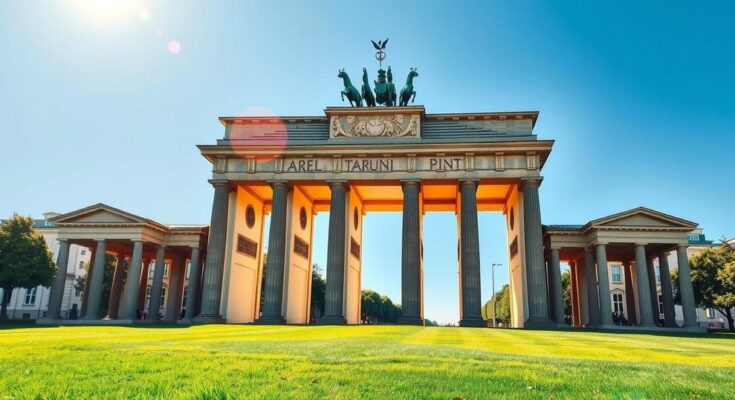Germany’s journey before and after reunification is a striking narrative of transformation. Once divided by the ominous Berlin Wall, the country has witnessed significant changes across its cities, with landmarks emerging as symbols of resilience and unity. This article explores the remarkable transformations experienced by Berlin, Potsdam, Stralsund, and other locations that bear witness to this profound evolution.
The Brandenburg Gate, Berlin’s celebrated symbol, stood as a boundary between East and West until the Berlin Wall fell in 1989. Its gates once barred access to westerners, but now it welcomes millions from both Germany and the globe, commemorating the newfound freedom that arose from the dissolution of barriers.
For nearly three decades, the Berlin Wall sliced through the heart of the city, holding a dark history laden with tragic attempts at escape. The East Side Gallery, adorned with murals from across the world, remains a vivid testament to hope and art, celebrating the creative spirit ignited by reunification.
The Hohenschönhausen prison, once a secretive stronghold of the Stasi, was a site of cruelty for political prisoners. Following its closure in 1989, it transformed into a poignant memorial, allowing visitors to confront the chilling realities of oppression and learn from the dark chapters of history.
The Palace of the Republic, a symbol of socialist power, stood tall until its demolition in 2006, paving the way for the construction of the Berlin Palace. This marks a significant shift from the era of East German dominance towards a resurgence of historical architecture and national identity.
In the Friedrichshain district, the former statue of Lenin has been replaced by modernity, with the square now rebranded as United Nations Square, signifying a departure from the past. This transformation mirrors the melting pot of cultures and ideologies that have shaped contemporary Berlin.
The KaDeWe department store, known as the Kaufhaus des Westens, remains a beacon of luxury shopping since its inception in 1907. Surviving the wars and division, it now serves as a bustling hub for both tourists and residents, illustrating the blend of history and modern consumer culture.
The Intershop chain once excluded locals by requiring foreign currency, symbolising disparities in East German society. Today, the area thrives as a lively market space, embracing the new freedom and accessibility to goods that came with reunification.
Once a luxurious retreat inaccessible to locals, the Interhotel Metropol’s former allure has been replaced by an inclusive Maritim hotel, welcoming all guests while echoing the changed socio-economic landscape post-reunification.
Playgrounds across former East Germany have transformed from rigid metal structures into inviting spaces made of softer materials, reflecting a growing recognition of safe play for children, merging nostalgia with contemporary design standards.
The Potsdam City Palace, previously destroyed during wartime and GDR demolitions, has undergone restoration, reflecting historical architectural elegance and signifying a revival of pride in Germany’s cultural heritage.
Dresden Frauenkirche stood in ruins for years after destruction in WWII. Its thoughtful reconstruction has since become a symbol of peace, embodying the collective hope nurtured during and after reunification.
The Hanseatic city of Stralsund has seen its historic old town, once on the brink of decay, flourish into a UNESCO World Heritage Site, showcasing the dedicated restoration efforts post-reunification and highlighting the town’s significance in Germany’s history.
Finally, the ‘Bridge of Unity’ in Vacha represents the end of division, a once heavily fortified barrier that now spans the River Werra, symbolising accessibility and connection rather than separation.
This article explores the significant transformations in Germany following reunification, showcasing prominent sites such as the Brandenburg Gate, Berlin Wall, and Hohenschönhausen prison. It highlights the changing landscapes of cities like Berlin, Potsdam, and Stralsund, and how they have evolved from symbols of division to unity, restoration, and cultural pride.
In summary, the transformation of Germany post-unification is illustrated through various landmarks and symbols that have moved from division to unity. The Berliner Gate, East Side Gallery, and Hohenschönhausen prison all tell a story of resilience, while sites like the Potsdam City Palace and Dresden Frauenkirche showcase architectural restoration and cultural revival. These changes reflect a growing appreciation for history, culture, and community in a reunified Germany.
Original Source: www.dw.com



